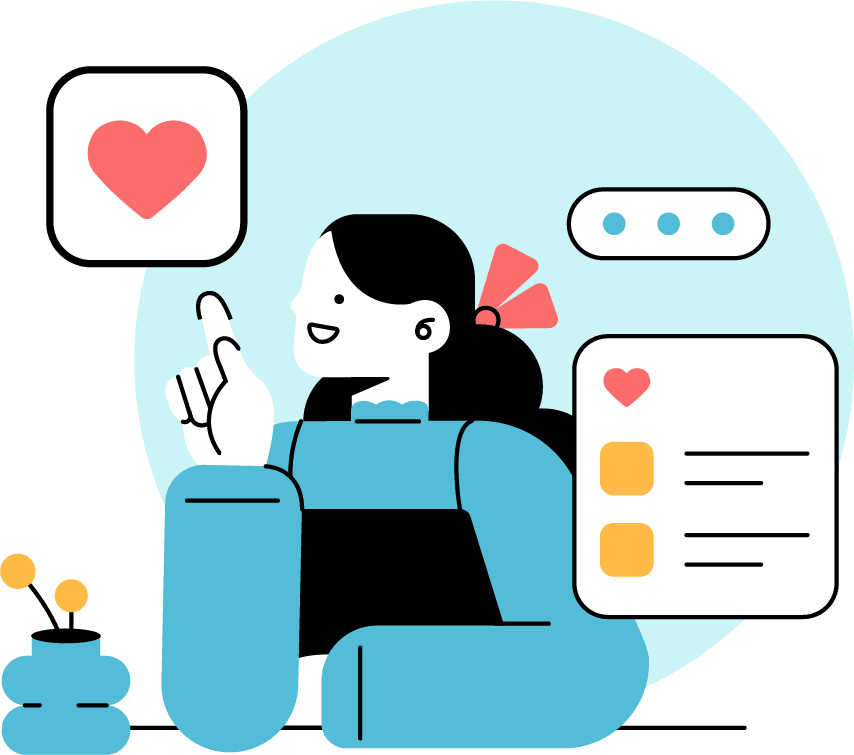What is “Zoom Anxiety”?
Zoom anxiety is the overwhelming feeling of stress and fatigue that one feels during and after a virtual meeting. One does not need to have been diagnosed with an anxiety disorder to experience zoom anxiety, in fact it is pretty common amongst remote employees and students, as well as individuals who engage in virtual social activities. Research suggests that virtual meetings increase the cognitive load from staring at oneself for the duration of the meeting, self-consciousness at one’s personal space being exposed on camera, or overcompensating for the lack of non-verbal cues that present themselves in this type of setting.
This method of communication has become much more common over the past few years, and while it has its conveniences, it also has some pretty significant drawbacks.
Feelings that Zoom Anxiety can bring up:
- Nervousness, unease
- Inability to contribute, unprepared
- Confusion, difficult to follow the conversation
- Stressed or less productive leading up to the meeting
What contributes to Zoom anxiety?
- People physically have to see themself on camera – leading to self criticism (we’re our own worst critics), and concerns about how they are being perceived by the rest of the group. When on calls throughout the day, it can feel like working in front of a mirror
What to do about it: change your view setting to “speaker view” or “hide self view” so that you are no longer the main focus on the screen and pay full attention to the speaker.
- Meeting attendees have a look into your personal life when you’re on zoom. This can add to one’s ruminating thoughts about exposing their personal space on camera(i.e. is my living area clean enough, what’s showing in the background) — and take them away from the present moment.
What to do about it: find a virtual background to hide what’s behind you. Can be something simple, that way you don’t have to worry about the dishes piling in the sink!
- Up to 90% of communication is non-verbal sent through body language. In face-to-face conversations, we can identify and interpret these cues naturally without putting too much thought into it. Virtual meetings make it difficult to read those social and physical cues that play such an important part of communication. This makes conversations hard to follow, especially when you have to concentrate on so many faces in different windows.
What to do about it: sitting up straight and maintaining constant eye contact are some ways for one to improve their non-verbal communication. Also reading up on how to interpret others non-verbal cues in a virtual meeting can be helpful.
- It is SO easy to multitask while on zoom. You can appear attentive by staring at your screen, without anyone knowing that you’re working on other things. Meaning, you can easily get side tracked on the never ending emails or distractions that pop through — causing one to be anxious about multiple things: trying to pay attention to what’s being discussed in the meeting, and whatever other task you’ve diverted attention to.
What to do about it: As easy and convenient as it is, try to stay present in meetings and avoid multitasking. You’re not saving that much time replying to those pesky emails sitting in your inbox, especially if you miss some critical information being shared by your boss during the meeting.
What can you do to manage it?
1) Draw your attention to your breath & body, to help ground yourself in the present moment (sensory grounding techniques can be helpful)
2) Approach zoom meeting with curiosity, versus worry – a change in perspective can do wonders
3) POSTURE: Try to get in a comfortable position – when we physically feel uncomfortable, we can sometimes feel emotionally uncomfortable (irritable, anxious, etc). Even the simple movement of readjusting your back upright, and practicing a few intentional shoulder rolls backwards, can help mitigate stiff muscles, and improve blood flow.
4) MOVE in between zoom meetings – even 5 minutes of movement can be a physical and mental reset.
5) Prepare, Prepare, Prepare. If someone has “zoom anxiety” and has a full day of meetings ahead of them, their morning routine (and even sleep the night prior) should be prioritized (e.g. limiting screen time in the morning prior to the meetings, exercise, limiting caffeine intake).
6) Instead of hour-long meetings, try to schedule 45-minute meetings instead. Meetings have a tendency to run over, so there’s less worry about being late for your next meeting and as a result being less present. It also allows you to have a quick 15 min mental break between sessions if the meeting ends on time.
Zoom anxiety treatment in California
If you feel like your zoom anxiety is getting in the way of your productivity at work and affecting your mental health, anxiety treatment options do exist. Clear Telehealth offers a virtual treatment program designed specifically for individuals who are struggling with Zoom anxiety and other issues in the workplace. Call us today 866.680.0969 to learn more and to see if you are eligible for an anxiety leave from work.






